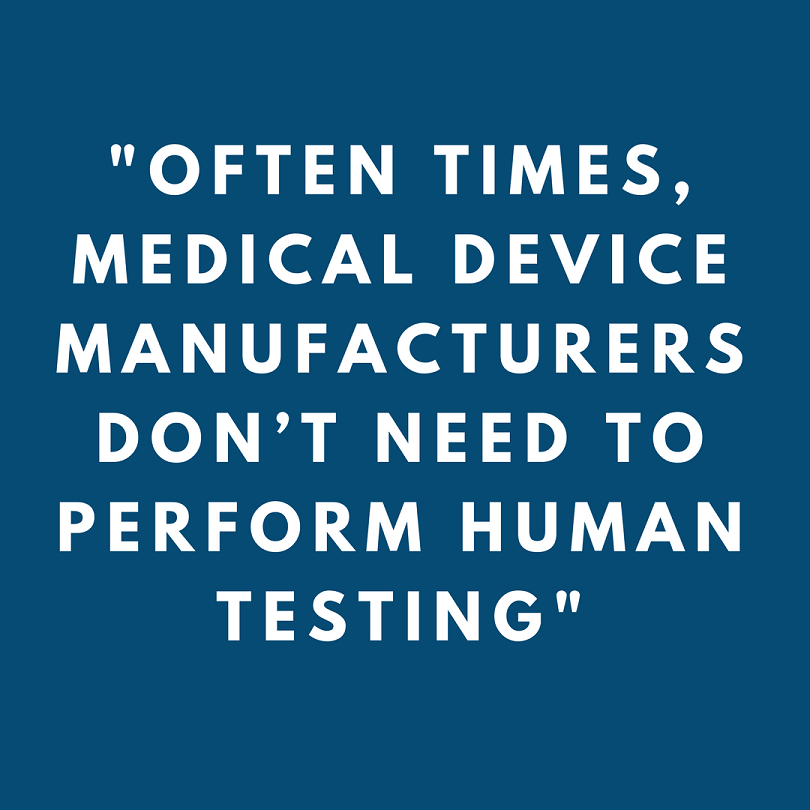From On-Screen To Real Life
"Chicago Med" Explores FDA GuidelinesThe US Food and Drug Administration (FDA) recently released a new medical device safety action plan that contains five focus areas that aim to improve the quality of real-world evidence, improve post-market surveillance, spur innovation around safer devices, advance cybersecurity initiatives and reorganize the Center for Devices and Radiological Health (CDRH). The FDA explains that the goal of this new plan is to examine how the FDA can enhance processes in order to maintain medical device quality.
Diving deeper into the new set of guidelines—the FDA also recently released a draft guidance that establishes how the existing 510(k) pathway will be expanded to give medical device companies greater flexibility towards medical device approval. FDA Commissioner Scott Gottlieb, M.D. says the new guidelines, “will modernize the FDA’s approach to moderate risk devices by allowing manufacturers to use objective performance criteria to facilitate demonstration of substantial equivalence of their new products to legally marketed devices.”

The American medical drama follows the day-to-day chaos of Chicago’s fictional hospital, Gaffney Chicago Medical Center and the lives of the doctors, nurses and staff. In the episode, “Nothing to Fear” Dr. Connor Rhodes, a cardio-thoracic surgeon, arrives at the hospital and is met by a former patient who is complaining of coughing and wheezing, however two weeks earlier, the patient underwent an aortic valve replacement under the care of Dr. Rhodes. A perplexed Dr. Rhodes examines his notes to determine what could have gone wrong, but doesn’t find anything and asks his attending surgeon, Dr. Latham, to re-do the surgery.
After several minutes of trying to determine the issue, Dr. Latham agrees to perform the surgery again at the insistence of the patient. While in the surgery observation deck, Dr. Rhodes comes to the realization that the issue is actually the valve—the medical device’s leaflets are asymmetrical and caused the patient’s blood to leak through. We also learn that the valve’s leaflets are not closing properly and the valve is defective. The two surgeons have the following discussion:
Dr. Latham: Seems the hospital changed valve manufacturers several weeks ago. This particular manufacturer didn’t bother to conduct any human testing.
Dr. Rhodes: They can do that?
Dr. Latham: All they have to do is prove that it performs the same function as a previous device.
Dr. Rhodes: Unbelievable.
This example of the 510(k) testing process demonstrates how medical device manufacturers get FDA approval and the ramifications of the testing process. For viewers who are unfamiliar with FDA guidelines around medical device testing, this is an eye-opening scene. Often times, medical device manufacturers don’t need to perform human testing as long as there is a substantially similar device that exists in the marketplace. The new Medical Device Safety Action Plan suggests a different way of product testing. The FDA says it, “expects a submitter to demonstrate that the new device meets the FDA-identified performance criteria by submitting a declaration of conformity, a summary of the data, and/or underlying data, as appropriate.”
The changes and process updates that will take place as a result of the new guidelines could lead to reduced regulatory obstacles, increased safety and effectiveness standards as well as greater peace of mind and confidence for patients and healthcare professionals. While “Chicago Med” is of course, fictional, the episode shines a light on the existing 510(k) process for viewers unfamiliar with FDA guidelines—perhaps as medical device companies update their procedures and the new FDA guidelines are implemented, audiences will see an example of the new testing process in popular culture and gain a greater understanding of how medical devices are tested.
Join us at the upcoming 8th Semi-Annual Risk Based Medical Device Supplier Quality Assurance Conference to hear from Daniel Walters, Branch Chief for Cardiovascular Device, FDA as he dives deep into updates on current FDA initiatives related to supplier quality assurance and answers attendee questions in a fireside chat.
Click here to download the full agenda and register for the 8th Semi-Annual Risk Based Medical Device Supplier Quality Assurance Conference on June 11-12 in Minneapolis, MD.





